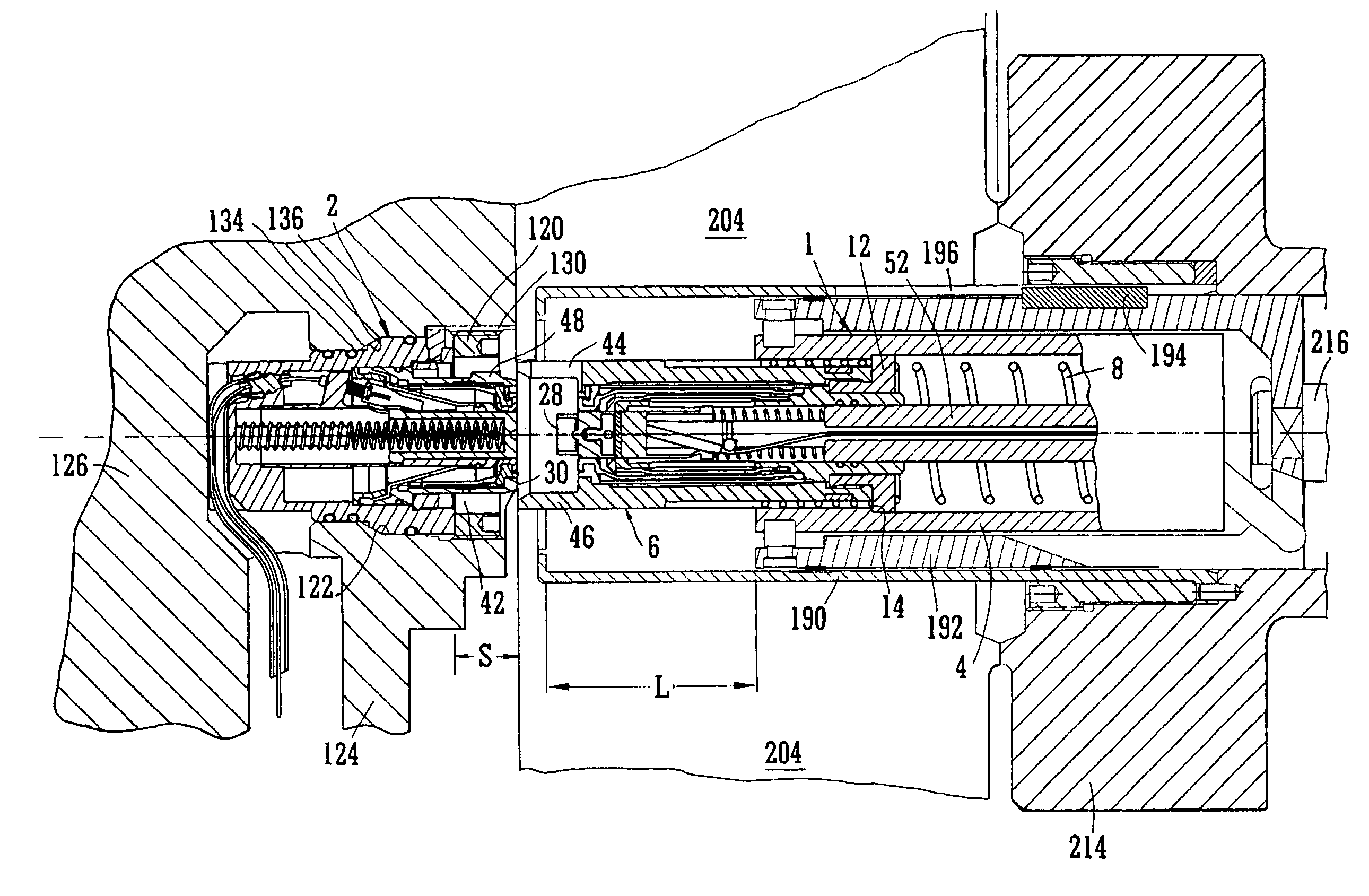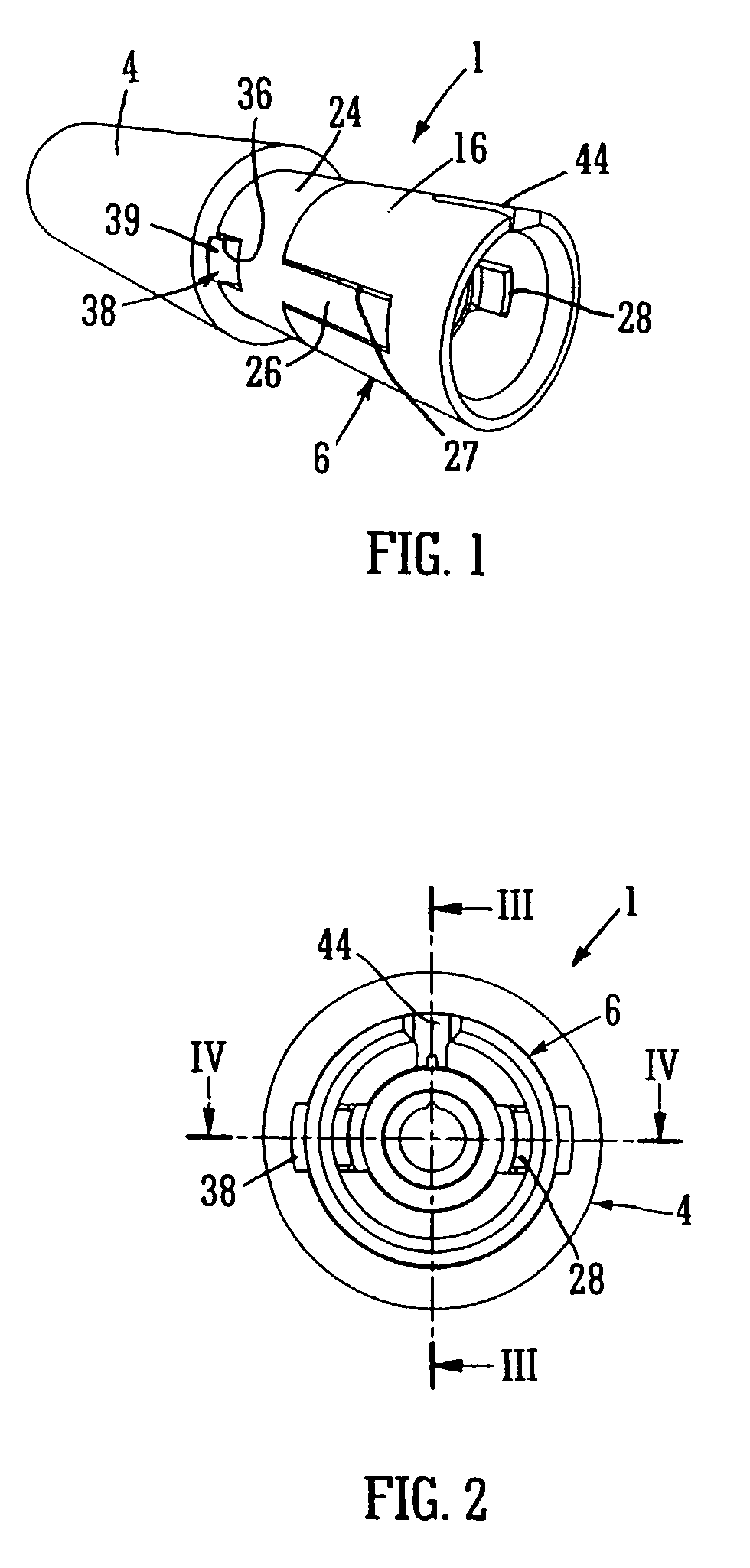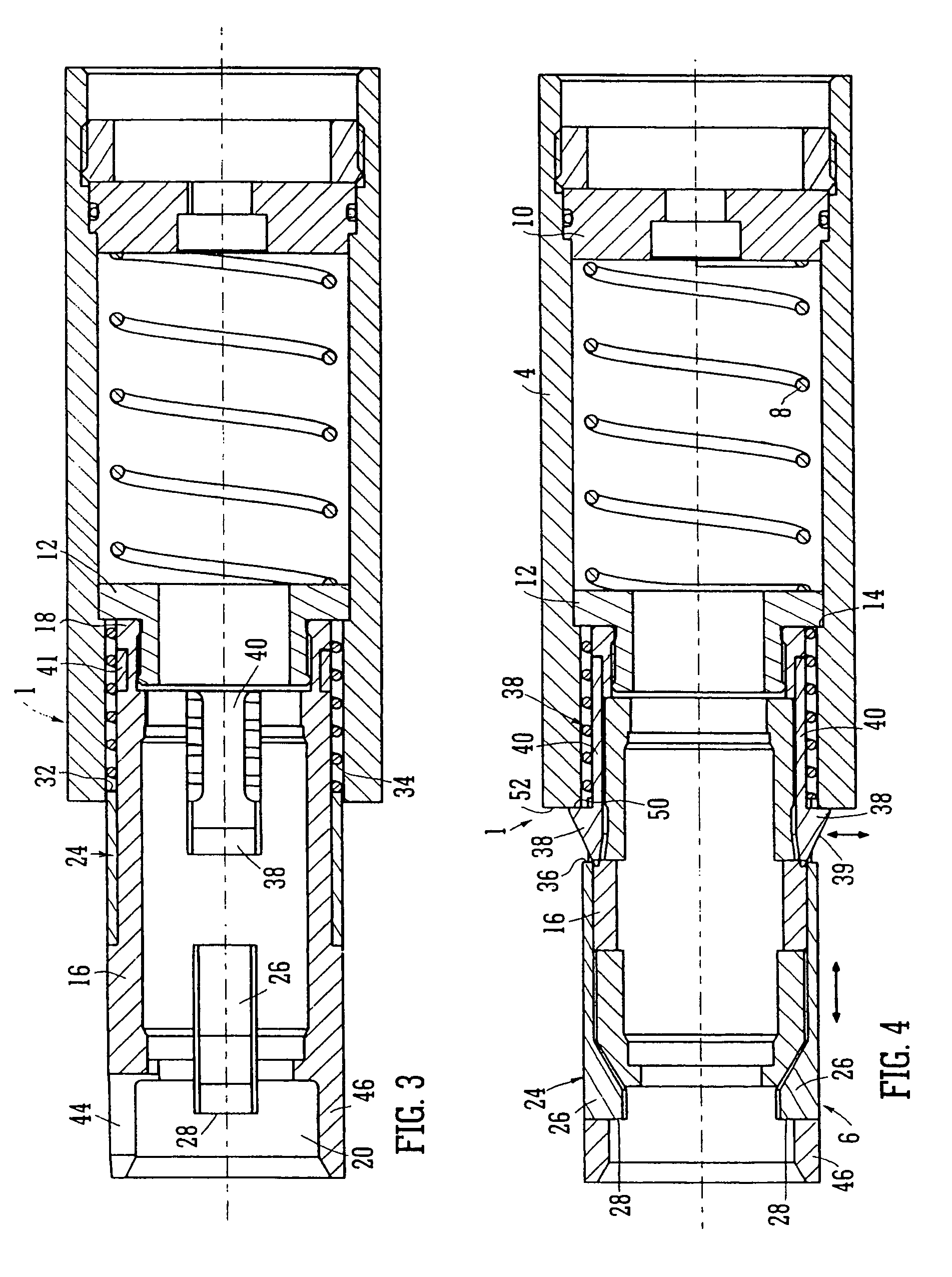Connector
a technology of connectors and connector parts, applied in the direction of connection contact material, coupling device connection, instruments, etc., can solve the problem of limited space available for connector parts to overlap axially
- Summary
- Abstract
- Description
- Claims
- Application Information
AI Technical Summary
Benefits of technology
Problems solved by technology
Method used
Image
Examples
Embodiment Construction
[0049]FIGS. 1 to 5 show a first connector part 1 and FIG. 8 shows a second connector part 2. The first connector part 1 has a housing 4 in which a shuttle 6 is axially movably located, biased to a forward position by a shuttle spring 8. The shuttle spring is seated against a rear wall 10 of the housing 4 and at its front it engages a collar 12 which abuts against a shoulder 14 of the housing.
[0050]The shuttle 6 has a cylindrical housing 16 which at its rear end 18 is fixed to the collar 12 and which has at its front end a forwardly projecting annular wall 46 forming a receptacle 20 for receiving a plug 22 of the second connector part 2 (see FIG. 8). The wall portion 46 has formed therein an axially extending alignment slot 44.
[0051]Latching means for latching the shuttle 6 to the housing 4 includes a latch release portion in the form of a latch release sleeve 24 and a latching portion in the form of a pair of latch arms 40. The latch release sleeve 24 is fitted around the cylindrica...
PUM
 Login to View More
Login to View More Abstract
Description
Claims
Application Information
 Login to View More
Login to View More - R&D
- Intellectual Property
- Life Sciences
- Materials
- Tech Scout
- Unparalleled Data Quality
- Higher Quality Content
- 60% Fewer Hallucinations
Browse by: Latest US Patents, China's latest patents, Technical Efficacy Thesaurus, Application Domain, Technology Topic, Popular Technical Reports.
© 2025 PatSnap. All rights reserved.Legal|Privacy policy|Modern Slavery Act Transparency Statement|Sitemap|About US| Contact US: help@patsnap.com



